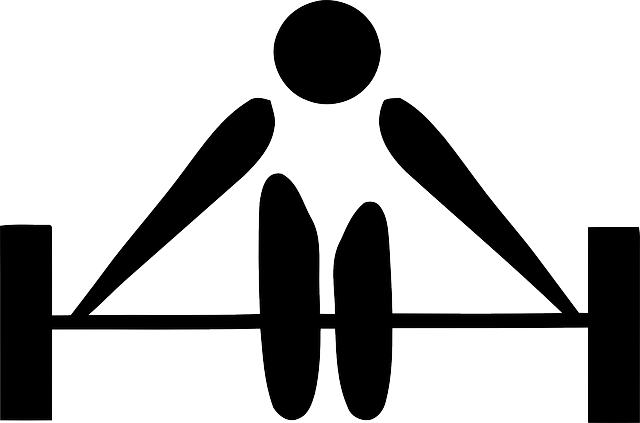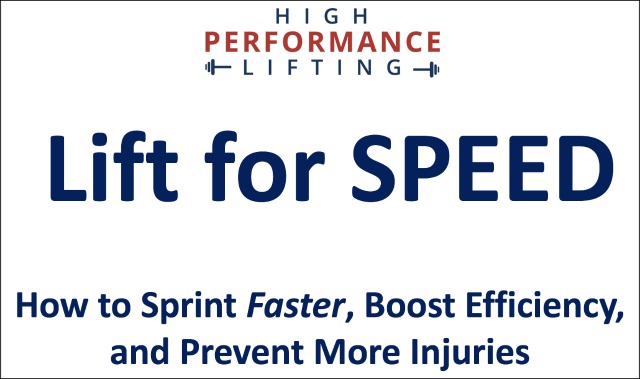The Year of Strength is already one of our most popular – because it’s clear that runners truly value being strong.

Over the last two weeks we’ve been discovering the truth about how runners should strength train.
We’ve learned that lifting weights is a critical piece of training for any runner (that’s why I don’t even consider it cross-training) because it provides so many valuable benefits:
- The consistency that comes from preventing more injuries
- Improved running economy from more efficient neuromuscular coordination
- Power, strength, and fast-twitch explosiveness that will lead to faster race times
We also talked about how to start lifting weights and avoid the biggest time (and performance) wasters for runners: lifting like a bodybuilder, taking a lot of fitness classes, and relying on wobble boards or Bosu balls for stability training.
I made all of these mistakes throughout my college and post-collegiate running. Even though I ran a 2:39 marathon and finished in the Top 10 in New England for the steeplechase, I left a lot of speed on the table.
Now, after speaking with some of the world’s leading strength coaches, I realized my approach wasn’t strategic.
If you compared how I worked out in the gym with a pro runner, you’d see two completely different workouts (that’s a bad thing). And the elite runner is getting a lot more accomplished. They’re…
- Increasing their workload capacity (one reason why pros can run such high mileage)
- Building a smooth, powerful, fluid stride
- Enhancing their ability to recruit more muscle fibers, leading to faster racing and higher efficiency
- Improving their explosivity and power, enabling them to kick hard and finish strong at the end of a race
Runners who focus on the proper way to lift will see undeniable progress with their running – fewer injuries and faster racing await.
But let’s be clear: it’s not just about what exercises to do. A well programmed strength plan will include:
- Progression: how do you build up to more advanced, complex lifts?
- Periodization: what do you focus on in Week 2 vs. Week 15 of your lifting program?
- Support: what running-specific exercises support the big lifts?
Any runner who truly wants to get stronger and improve their performances knows these elements are required.
If that’s you, join our free strength ecourse and I’ll reveal all of the elements of a well programmed strength plan!
Lifting for Speed: How to Power Clean
Today, I want to introduce you to one component of a proper lifting program: explosive exercises.
These are the types of weight lifting exercises that build power, speed, and explosivity. And when you add explosive exercises to your training, the results are powerful.
Here’s a short case study: Addie Bracy is the 2017 Mountain Runner of the Year. Her strength coach is Randy Hauer, the USA Weightlifting coach who helped dispel popular myths about liftings weights last week.

She told me:
When I started to look at what I was or wasn’t doing when I was injured versus when I was healthy, the common denominator was that I wasn’t lifting regularly during the periods of injury.
After a few weeks, I started to feel the benefits of lifting. I can feel a difference in my form and mechanics when I’m lifting versus when I’m not. I also feel stronger and more physical stable so that I feel more confident in handling a higher work load.
I definitely think every runner can benefit from strength training. Even if you don’t think lifting can directly make you faster, you’ll see improvements in aches and pains.
Getting rid of those things lets you train harder and more consistently, which ultimately leads to the opportunity for faster times.
That’s what I love about strength training: not only is it appropriate for every runner but it can also directly improve your speed.
You’re probably getting excited to get started with some proper lifting workouts yourself!
So I’m excited to share one particular exercise that builds strength and power and speed: the Power Clean.
This is Addie showing you how to perform a Power Clean from the Power Position (the bar begins at about mid-thigh).
Follow these steps:
- Stand with bar hanging in front of the body, resting on the upper-mid thigh. Grip the bar with the clean grip (with hook grip preferred)
- Feet are hip width or slightly wider (use your best “jumping stance”). Stand tall, at attention, take a breath and lift the chest, keeping the back straight and strong and core tight.
- Bend the knees 4-6” (Power Position) keeping the torso as vertical as possible with your balance midfoot but slightly towards the heels.
- Immediately and explosively straighten the knees (jump, but jump with the
heels down as long as possible). - Now pull on the bar, fists next to the body, whipping the elbows and spinning the bar into the front squat rack position.
- As you whip the elbows, simultaneously rebend the hips and knees to receive the bar in a slight 4-6” squat.
- Recover to standing and carefully lower bar back to mid thigh to perform another rep.
Runners can incorporate exercises like the Power Clean into their training for more explosiveness.
The next time you need to kick hard for a negative split, that ability will be yours!
Putting The Puzzles Pieces Together
Of course, one exercise is not a complete strength program. There are still so many questions:
- What exercises prepare you for explosive lifts like the Power Clean?
- Should explosive lifts be done early in a training cycle? (hint: no!)
- How are plyometrics like box jumps added into the training?
If you’re interested in ALL of the pieces to the strength puzzle – so you can build the power and strength to race faster – I’ve got great news.
Sign up here and I’ll walk you through all of the details of elite-level strength training.
Register here and you can expect to learn even more mistakes that you should avoid and the exact lifting schedule that produces powerful, race-ready runners.
If you’re ready to take your running more seriously this year and are ready to take the next step, you won’t want to miss this.
After you sign up, I want to challenge you to do just ONE THING in the next 5 minutes: commit to focusing on getting stronger.
Tell your spouse. Join a gym. Tattoo it on your bicep. Whatever it takes.
You’ve seen how transformative weight lifting can be for your running. It’s been a total game-changer for other runners like you (and you should expect similar results, too).
Leave a comment below and tell us how you’re going to commit to strength training this year.
In a few months – when you’re setting PR’s and feeling healthier than ever – you’ll hardly feel like the runner you do today.
